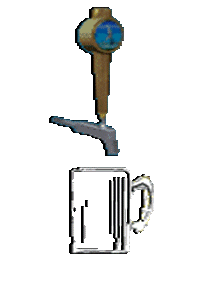Colloids are mixtures of two substances that are insoluble. One substance forms small particles of around 10mm in diameter (dispersed phase), while the other surrounds it (continuous phase). The particles are not solutions as they are not intimately mixed. Colloids are very useful and can be seen in an endless list of products ranging from paints, shampoos, camera films and pharmaceuticals to almost all the foods we eat.
There are four types of colloid:

| Colloid | Continuous Phase | Dispersed Phase | Examples |
|---|---|---|---|
| Emulsion | Liquid | Liquid | Cream, Paint |
| Sol | Liquid/solid | Solid | Shampoo |
| Aerosol | Gas | Liquid/solid | Smoke |
| Foam | Liquid/solid | Gas | Beer head |
Ice cream is simultaneously an emulsion, a foam and a sol!!
The properties of the colloids in ice cream depend upon the structure of the particals in the dispersed phase because even just a small number of particles can have a massive surface area.
For more information on colloids visit the Bristol Colloid Centre